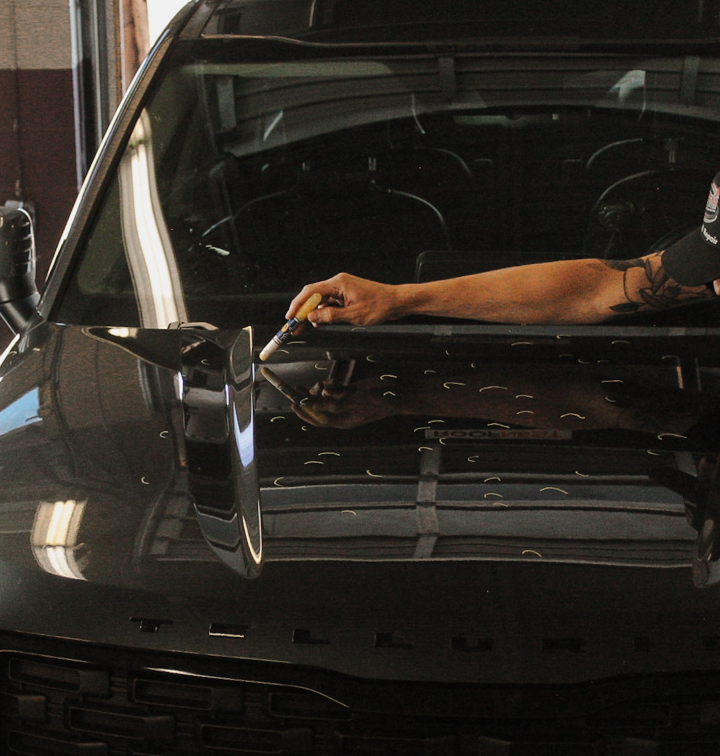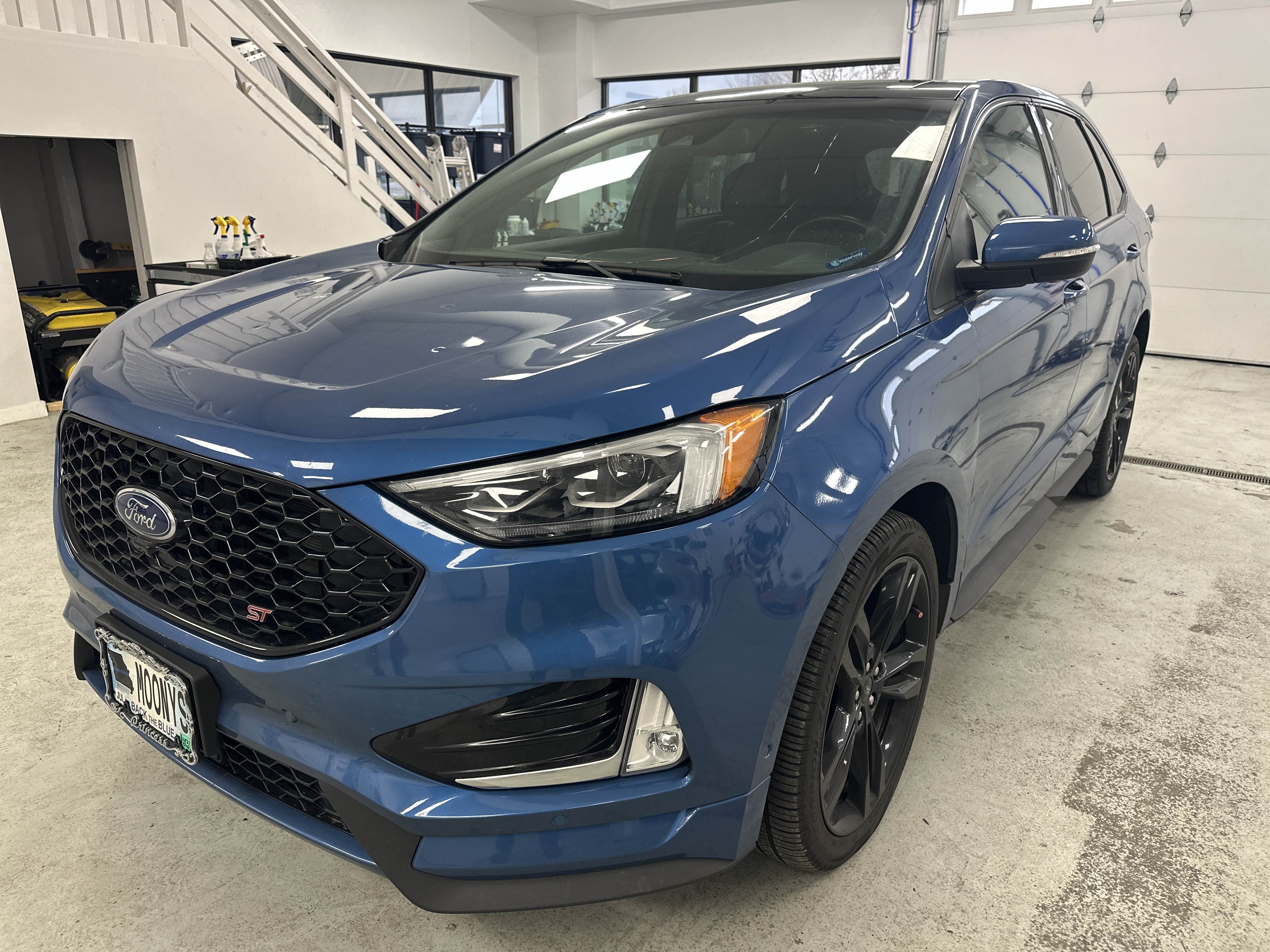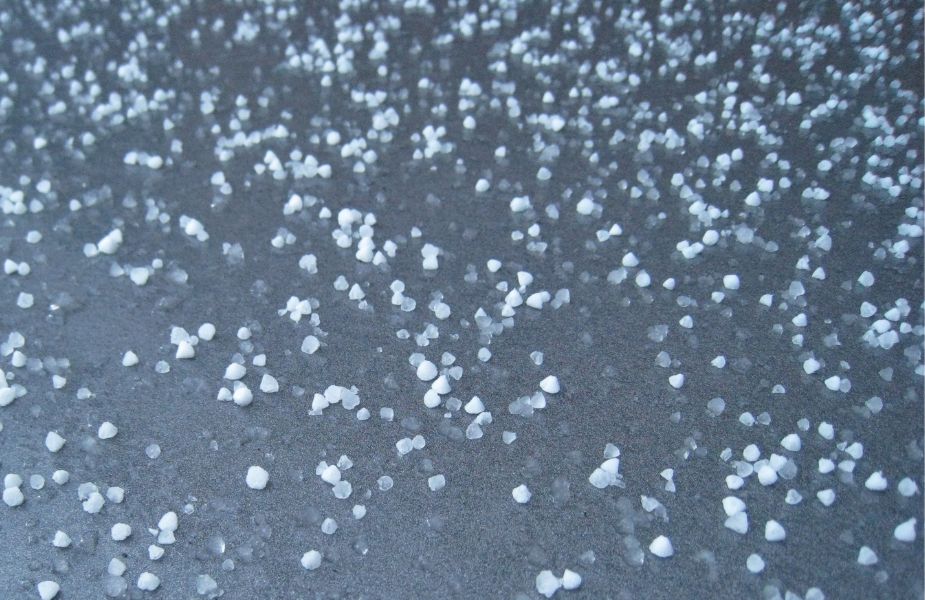Top 3 Reasons Why Procrastinating Auto Hail Repair Can Become Costly
If you've recently been the unfortunate victim of a hailstorm, your vehicle might be sporting a collection of unsightly dents. While it's tempting to...
4 min read
The Storm Guys : Jan 17, 2024 6:40:59 PM

Hailstorms can be unforgiving, leaving a trail of dents on your vehicle that screams for attention. While the urge to tackle hail damage repair on your own may be tempting, there are pitfalls along the DIY path that can lead to more harm than good.
Any quick internet search might suggest using hot water to fix hail dents (or any type really!). The idea is to pour hot water over the dented area and then use suction or pressure to pop the dent back into place. Unfortunately, this DIY hack is a recipe for disaster.
Hot water may cause the metal to expand temporarily, making the dent less visible. However, as the metal cools, it contracts again, often leaving you with a more complicated and worsened situation. Additionally, sudden temperature changes can damage the vehicle's paint and finish, creating an even bigger problem than the original dents.
Another common DIY approach involves using dry ice to cool the dented area, hoping that the sudden temperature change will cause the metal to contract and pop the dent out. While the science behind this method seems plausible, the execution is often tricky and risky.
Handling dry ice requires extreme caution due to its extremely low temperature. Without proper safety measures, you risk frostbite or other injuries. Moreover, the success rate of the dry ice method is inconsistent, and you might end up with more frustration than before.
The trusty plunger is a go-to tool for many household fixes, but it's not your best ally when it comes to hail damage repair. Some DIY enthusiasts try using a plunger to suction the dents out, thinking it's a straightforward solution. However, vehicle surfaces are not as accommodating as bathroom drains.
Using a plunger on your car's body can lead to uneven pressure distribution, potentially causing additional damage. Also, the plunger method is unlikely to address the intricacies of hail dents, leaving you with unsatisfactory results and a vehicle that still bears the scars of the storm.
The allure of taking a hammer to those pesky dents is strong, but it's a perilous path. DIYers often believe that a gentle tap from the inside of the dent with a hammer can miraculously restore the metal to its original shape. Unfortunately, the reality is quite different.
Hail damage repair requires a delicate touch and precise technique, something a hammer-wielding DIYer might lack. Untrained attempts at hammering out dents can lead to uneven surfaces, paint chipping, and even further structural damage. The risk of causing irreversible harm to your vehicle far outweighs any potential short-term gains.
When it comes to hail damage repair, some suggestions are downright risky. Various home remedies involve using common household items like aluminum foil, compressed air, or even a hair dryer to address hail dents. However, the effectiveness of these methods is dubious at best.
Home remedies often lack the precision required for successful hail damage repair. They may provide temporary relief, but the likelihood of achieving a professional-looking and long-lasting result is low. Relying on such methods might leave you with wasted time, effort, and potentially a worsened situation.
While the internet is filled with DIY enthusiasts showcasing their hail damage repair adventures, the risks and uncertainties associated with these methods make professional intervention a far more sensible choice. Here's why:
Inadequate Tools and Expertise: Professional auto body repair shops are equipped with specialized tools designed for precision dent repair. Attempting to replicate these techniques at home often results in subpar outcomes due to a lack of proper tools and expertise.
Hidden Damage: Hail damage is not always skin-deep. Professionals know how to assess and address potential structural damage that may not be immediately visible. DIY efforts are more likely to miss these underlying issues.
Paint Damage: Most DIY methods, especially those involving heat or pressure, carry a high risk of damaging your vehicle's paint. Repainting a car is a complex process that requires professional skill and equipment.
Warranty and Insurance Concerns: DIY repairs can void warranties and complicate insurance claims. Professional repairs come with guarantees, ensuring that you are covered in case issues arise after the repair is completed.
Seeking professional help for hail damage repair is not just about avoiding pitfalls; it's about ensuring a superior outcome. Here's how professional auto body repair shops provide an unmatched advantage:
Precision Tools: Professional technicians use specialized tools, such as paintless dent repair instruments, to precisely manipulate the metal back to its original form without damaging the paint or finish.
Expertise and Training: Trained professionals understand the intricacies of various dent types and the specific techniques required for optimal results. Their expertise ensures that your vehicle receives the care it needs.
Comprehensive Assessment: Professionals conduct a thorough inspection to identify not only visible damage but also potential hidden issues. This comprehensive approach addresses the full spectrum of damage, preventing future complications.
Paint Protection: Professional repairs prioritize preserving the vehicle's original paint. This not only maintains the aesthetic appeal but also prevents additional damage that DIY methods may inadvertently cause.
Insurance Collaboration: Reputable auto body repair shops often collaborate with insurance providers, streamlining the claims process and ensuring that you receive the coverage you are entitled to.
While the allure of a DIY fix is understandable, the risks associated with hail damage repair make it a gamble not worth taking. From potential paint damage to the risk of exacerbating existing issues, the pitfalls are numerous. Entrusting your vehicle to a professional auto body repair shop ensures precision, expertise, and long-lasting results.
So, the next time hail leaves its mark on your vehicle, resist the urge to dive into the world of DIY repair. Instead, opt for the professional touch, sparing yourself from unnecessary headaches and safeguarding the integrity and appearance of your cherished vehicle. Remember, when it comes to hail damage repair, leave it to the pros for a guaranteed win.

If you've recently been the unfortunate victim of a hailstorm, your vehicle might be sporting a collection of unsightly dents. While it's tempting to...

Hailstorms can strike with sudden fury, leaving a trail of dented metal and frayed nerves in their wake. For car owners, the sight of their cherished...

When it comes to dealing with hail damage on vehicles, a lot of misconceptions can cloud your judgment. From the belief that only large hailstones...